What Is a Rug? An Expert's Simple Guide to Floor Coverings

What is a rug? Many people mix up rugs with carpets, but rugs are smaller floor coverings that measure up to 2 metres in length. Unlike carpets that cover the entire floor space, you can move them around easily.
Rugs and carpets differ in more ways than just their size. Most rugs showcase handwoven patterns made from natural materials like wool, cotton, or silk. Carpets, on the other hand, use synthetic materials to last longer. Rugs give you amazing flexibility because they're easy to clean and need no professional installation. Their varied patterns and textures can change your space completely.
Let's take a closer look at everything you should know about rugs in this piece, from their simple definition to picking the perfect one for your home. You'll learn about their practical benefits, materials, and how they can boost your interior design.
What Is a Rug? Understanding the Basic Definition
A rug is more than just a floor covering - it's an artistic statement piece that can transform any room. Let's explore what makes a rug special and how it can enhance your living space.

The formal meaning of 'rug' in home décor
Merriam-Webster keeps it simple: a rug is "a piece of thick, heavy fabric that usually has a nap or pile and is used as a floor covering." This basic definition shows us what makes rugs stand out in interior design.
The word "rug" has roots that go back hundreds of years. People first used it to mean "coarse fabric" in the mid-15th century. Language experts trace it to the Old Norse word "rogg," which meant "shaggy tuft," and the pre-German word "rawwa." The meaning we know today - "floor mat" - came about in the early 1800s.
Encyclopaedia Britannica tells us that "rug" and "carpet" both mean "any decorative textile normally made of a thick material and now usually intended as a floor covering." The main difference? A rug covers just part of the floor, while a carpet goes wall to wall.
Rugs are woven fabrics that cover specific floor areas. Most are made from natural fibres like cotton, jute, silk, or wool. These days, synthetic materials are accessible to more people too. The thick, heavy construction and textured surface make rugs both practical and comfortable.
How rugs differ from other floor coverings
Size and installation set rugs apart from other floor coverings, especially carpets. Rugs usually measure up to 2 metres long, while carpets cover entire rooms. Carpets stay fixed to the floor as permanent features.
Rugs are great because you can move them around. You can roll them up, switch rooms, or store them away when needed. This makes them perfect for renters or anyone who likes to change their decor often. The ability to move rugs also makes cleaning much easier than fixed carpets.

Manufacturing methods create another big difference. Craftsmen weave area rugs on special looms. Carpet makers use machines to produce specific widths for wall-to-wall installation. These different methods give each type its unique characteristics.
Rugs work well on many surfaces. You can put them on hardwood, tile, or even other carpets. This flexibility lets homeowners create interesting layers of textures and patterns that match their style.
Common misconceptions about rugs
People often get the wrong idea about rugs. Many think they're just for show, but rugs do much more. They reduce noise, add insulation, protect floors, make hard surfaces softer, and help define spaces in a room. They can even make slippery floors safer.
Some believe rugs need too much maintenance. The truth? Most modern rugs are easy to care for. Regular vacuuming and occasional turning keep them looking great. Many rugs can handle spot cleaning or washing too.
A common myth suggests rugs belong only in living rooms or winter settings. This limits their potential. Rugs can boost any space - bedrooms, hallways, kitchens, dining areas, and even outdoor spots like patios. Today's materials offer options for all seasons, from cool cotton and jute to warm wool.

Room size worries stop some people from buying rugs. The right rug can actually make a room look bigger. Light colours and proper sizing help create an illusion of space rather than shrinking it.
Many think rugs must match everything perfectly. Matching too much creates a boring look. A rug should complement your decor while adding interest through contrasting patterns, textures, or colours that make your space more appealing.
The Key Differences Between Rugs and Carpets
Rugs and carpets might look similar at first glance, but they're quite different in many ways. These floor coverings have unique features that set them apart. Let's take a closer look at what makes each special and how this knowledge can help you choose the right option for your home.

Size and installation differences
The biggest difference between rugs and carpets comes down to their size and how you put them in. Rugs usually max out at 2 metres long, while carpets cover your entire floor from one wall to another. This size difference plays a big role in how you can use them.
You'll need professionals to install carpets. They secure them to your subfloor using adhesives, tack strips, or stretch fitting. This makes carpets a permanent part of your room. The installation process costs extra on top of the carpet's price.
Rugs are much simpler. You just place them where you want them and maybe add an anti-slip mat underneath for safety. This makes rugs a more affordable option when you look at the total cost.

Mobility and flexibility factors
The most practical difference between these floor coverings is how easy they are to move. You can roll up rugs, move them to different rooms, or pack them away when you don't need them. This works great for renters or homeowners who like to change their decor often.
Carpets are the opposite. Once they're in, they stay put. You'll need professional help to remove or replace them, which makes them more of a long-term investment.
This mobility affects several practical aspects:
-
You can take rugs outside for a deep clean or send them to professional cleaners
-
You can switch rugs with the seasons or when you want a new look
-
It's easier to move furniture around and change your room's layout with rugs
Material and construction variations
Rugs and carpets are made differently, and this affects how they look, feel, and last. Rug makers often create unique pieces of art through hand-weaving. They use techniques like hand-knotting, tufting, hooking, and flat-weaving to create different textures and patterns.

Machines make most carpets using advanced weaving techniques that create the same pattern throughout. This gives rooms a unified look.
The materials used are different too. Rug makers often choose natural materials like wool, cotton, silk, or jute, staying true to their traditional roots. Some special rugs use animal hides or leather for unique textures. Carpet manufacturers prefer synthetic fibres like nylon, polyester, or polypropylene because they hold up better in busy areas.
These differences in construction and materials affect how you care for them. Rugs need simpler care - you can often spot-clean them or wash them by hand depending on what they're made of. Carpets need more work, including regular vacuuming and professional cleaning to keep them looking good.
The choice between rugs and carpets comes down to what works best for your lifestyle. Carpets give you wall-to-wall comfort and a unified look, but they're harder to change. Rugs let you express your style and offer more flexibility, though they only cover part of your floor. These basic differences will help you pick the right floor covering based on your style, priorities, and practical needs.
Common Types of Rugs You Should Know
The world of floor coverings shows an amazing variety of rug types. Each type comes with its own unique features and uses. A good grasp of these different categories helps homeowners pick the right option that fits their space and needs.

Area rugs and their purposes
Area rugs work as flexible décor pieces that breathe new life into spaces with colour, texture, and character. These rugs don't cover entire rooms but specific sections. They excel at defining zones in open-plan living spaces. You can use them to separate dining areas from living spaces or create cosy conversation spots around furniture groups.
Area rugs' main job is to keep furniture in place. They stop tables, chairs, and sofas from sliding on hard surfaces, especially with the right rug underlay. These rugs add warmth and comfort to your feet. They also help with soundproofing by reducing the noise of footsteps on wooden floors.
Oriental and Persian rugs
Oriental rugs are handcrafted floor coverings from many parts of Asia, like China, India, Tibet, and Turkey. These beautiful pieces show off centuries-old traditions through careful craftsmanship and unique regional patterns.
Persian rugs from Iran stand out as the most famous type of Oriental rugs. These masterpieces show off complex designs with medallions, flower patterns, and detailed borders. Real Persian rugs are hand-knotted, which makes them last longer and creates intricate details that machines can't copy.
Each Persian rug style has its own unique look. Tabriz rugs have complex designs with tight knots. Kashan rugs show off balanced patterns. Isfahan rugs mix high-quality silk and wool with detailed curved patterns.

Modern and contemporary designs
Modern and contemporary rugs bring fresh looks to rooms with clean lines, subtle colours, and simple designs. These rugs typically feature smooth looks, unique patterns, and free-flowing elements in neutral shades that work well with modern décor.
Contemporary designs often use bold, dynamic patterns that become the room's centrepiece. Marble effects, abstract designs, and mid-century modern patterns are trending right now. These rugs create visual interest through geometric shapes, unexpected colour combinations, and new textures.
Natural fibre rugs
Natural fibre rugs add organic texture and eco-friendly benefits to your space. Jute rugs feel softer than other natural options and provide good comfort. They work best in bedrooms and other low-traffic areas because they're not as durable.
Sisal comes from agave plants and makes tough rugs perfect for busy areas. The rough texture means less comfort, and it soaks up stains easily. Seagrass offers a good middle ground. It grows underwater, which creates a natural wax coating that fights stains and feels better than sisal.
Hemp rugs give you sustainable, mildew-resistant options that get softer over time, though they shed at first. Cotton rugs made from recycled fabric strips offer the most comfort and come in bright colours.

Specialty rugs for specific spaces
Specialty rugs meet unique needs throughout your home. Runners are long, narrow rugs that protect busy hallways and stairs while adding style to these often-forgotten spaces.
Custom rugs solve problems for tricky floor plans or unusual room shapes. You can customise the size, material, colour, pattern, and texture to match your décor perfectly. Custom sizing helps with oddly shaped rooms that need exact coverage.
Kitchen mats and bathroom rugs work well in wet areas, while outdoor rugs made from weather-proof materials let you decorate patios and decks.
What Materials Are Used to Make Quality Rugs?
A rug's material composition shapes its quality, durability, and character. The properties of different materials can help you choose a rug that matches your style, needs, and budget.

Natural fibres: wool, cotton, silk and jute
Wool remains the most respected natural rug material. Its exceptional durability and luxurious feel make it a timeless choice. These rugs keep their shape and beauty over time and provide great insulation in cold weather. Wool's natural oils make cleaning and maintenance easy, even in busy homes. The material's fire-retardant and antimicrobial properties create a healthier indoor environment.
Cotton rugs are affordable and soft, which makes them great for casual spaces and kids' rooms. You can move and clean them easily—many are machine washable, which is a huge plus. While cotton doesn't last as long as wool, its bright colours and variety make it perfect for seasonal changes.
Silk rugs represent pure luxury. These beautiful pieces have an unmistakable shine and incredibly soft texture. We recommend them for low-traffic areas like bedrooms. They need expert cleaning and careful upkeep. Their stunning look and feel make them worth the extra care.
Plant fibres like jute, sisal, and seagrass add an eco-friendly, rustic charm. Jute feels softest but doesn't last as long as sisal. Sisal comes from agave plants and creates tough rugs that work great in high-traffic areas, though they feel rougher. Seagrass hits the sweet spot—it resists stains naturally and feels comfortable enough underfoot.
Synthetic options: nylon, polyester and polypropylene
Nylon rugs are strong and durable, which works well in busy homes. They keep their shape under heavy furniture and handle wear and static well. This silk alternative shows colours beautifully while costing less.
Polyester rugs have bright colours and feel silky smooth. They're easy to clean since the material doesn't absorb spills—just wipe with a damp cloth. The fibres might flatten in high-traffic areas over time. Oil stains can be tough to remove since they stick to polyester fibres.
Polypropylene (or olefin) shines in durability and practical use. This tough material handles heavy foot traffic without losing its look or texture. Living rooms and hallways benefit from its resilience. These rugs resist stains, fading, moisture, and mildew well. You can clean them thoroughly by scrubbing or hosing them down, which works great outdoors or in messy areas.
Animal hide and leather rugs
Cowhide rugs blend natural elegance with rustic tradition. Each hide has unique patterns based on the breed, creating one-of-a-kind pieces. Quality cowhide rugs work well for people with allergies, unlike what many believe.
You can use cowhide rugs on floors, walls, or as furniture throws. A good cowhide rug lasts for generations without matting or wearing out. Keeping them clean is straightforward and simple.
How material affects durability and feel
Your choice of material shapes how long the rug lasts and how it feels. Wool lasts longest among natural fibres, often more than ten years with good care. Nylon and polypropylene are the toughest synthetics, with polypropylene working best outdoors.
Different materials feel unique underfoot. Wool and cotton feel naturally soft, while silk feels incredibly luxurious. Modern synthetics have improved—polyester feels almost like natural materials. Sisal and seagrass add texture but don't cushion as much.
Cleaning needs vary too. Synthetics fight stains better, especially polypropylene, which repels most liquids. Wool resists stains surprisingly well but might need professional cleaning. Jute looks great, but soaks up liquids and stains easily.
The perfect rug material balances your style with real-life needs. Think about foot traffic, cleaning, and lifestyle, along with how it looks.
What Is a Rug Used For? Practical Functions
Rugs do more than just enhance your home's appearance. These versatile floor coverings have remained vital elements in interior design for centuries, and there are good reasons why.

Floor protection benefits
Your flooring gets a protective barrier from rugs that preserves its condition and extends its life. Wooden floors stay safe from scratches that furniture, pet claws, and daily foot traffic might cause. Rugs distribute weight and impact in busy areas like entryways and hallways, which substantially reduces stress on the flooring underneath.
Rugs also provide great moisture protection. Spills get absorbed by the rug, giving you time to clean up before your wood or laminate flooring suffers damage. The rug's surface blocks direct sunlight that could fade and discolour wooden surfaces as time passes.
Noise reduction and acoustic properties
Rugs excel at absorbing sound waves that would bounce off hard surfaces. This quality makes them excellent for reducing echo and lowering noise levels throughout your home.
Thick wool rugs can cut sound reverberation by up to 50% according to research. Standard rugs decrease noise levels by about 30%. This sound-dampening quality works best in open-concept spaces or rooms with hard flooring like wood, tile, or laminate.
A rug's sound absorption depends on its thickness, material, and density. Wool proves excellent at absorbing high-frequency sounds like voices and TV noise. It also helps reduce low-frequency sounds such as footsteps.
Comfort and warmth advantages
Your floors retain more heat thanks to rugs' insulation benefits. They create a cosy barrier between feet and cold floors that makes spaces more comfortable during the winter months.
Room temperature changes noticeably with rugs' insulating properties. Thicker rugs offer better thermal resistance. Wool rugs stand out with their high thermal resistance and ability to trap warm air efficiently.
Defining spaces in open floor plans
Open-concept homes benefit from rugs that create visual boundaries between different functional areas without making the space feel cramped. Furniture groupings get anchored properly and distinct zones emerge for dining, conversation, or relaxation.
Rugs placed strategically guide movement and create natural pathways through spaces. Their size, shape, colour, and pattern all help define an area effectively. A rug should cover at least 60-70% of the floor space in a specific area to maximise its zoning impact.
How to Choose the Right Rug for Your Space
Picking the perfect rug needs more than just good looks - several practical factors come into play.
Sizing guidelines for different rooms
The golden rule for rug sizing? Always go larger when in doubt. Your living room rug should have at least the front legs of furniture sitting on it, with 30-45cm extending past your sofa. The dining room needs extra space to pull out chairs comfortably - plan for 60-80cm of rug on each side of the table.
Your bedroom rug should stick out roughly 50cm from the bed's sides to give your feet a cosy landing spot. A great trick is to map out potential rug sizes with masking tape on your floor before you buy.
Matching rugs to your existing décor
The right colours are the foundations of great rug selection. Your rug doesn't need to match everything in the room, but it should work well with at least two colours in your space. Rooms with neutral colours can benefit from a rug that adds a splash of colour or an eye-catching pattern. The texture matters just as much - different textures add depth and make your space more interesting.
Considering traffic patterns and lifestyle needs
Each area of your home needs different rug features. Busy spots like hallways and living rooms need tough materials such as wool, wool-mix, or synthetics like nylon or polypropylene. Homes with kids or pets should focus on stain-resistant rugs that clean up easily.
Budget considerations across different rug types
Quality rugs are an investment, but you'll find options at many price points. Wool rugs cost more but last longer - often more than a decade with good care. Synthetic rugs are budget-friendly and still stylish, usually costing between £60-£75 for a standard 170x120cm size.
The right size and material for your specific needs matter most. A properly sized, durable rug in a busy area ended up being a better value than a cheap one you'll need to replace soon.
Conclusion
Rugs definitely add more value than just covering your floor. These versatile pieces bring warmth, style, and functionality to our homes. Despite their smaller size compared to carpets, rugs protect floors, reduce noise, and serve as powerful design elements.
Traditional Persian masterpieces and modern synthetic options each bring unique benefits to different parts of your home. Your perfect rug choice depends on specific needs. You should think over foot traffic, maintenance needs, and your room's existing décor before making a decision.
A carefully selected rug ended up revolutionising any room with its practical benefits and visual appeal. Natural fibre rugs appeal to eco-conscious homeowners, while durable synthetic options work best in high-traffic areas. These floor coverings remain key elements that create comfortable and stylish living spaces.
People Also Asked
What is the definition of a rug?
A rug is a floor covering typically made of woven or tufted fabric, designed to provide warmth, comfort, and aesthetic appeal to a room. Unlike carpets, rugs are usually smaller and can be easily moved or replaced.
How do you describe a rug?
A rug can be described by its size, shape, material, pattern, and texture. It's often characterized by its pile height (short, medium, or high), color scheme, and the technique used in its creation (hand-knotted, machine-made, etc.). The overall style, whether traditional, modern, or eclectic, also plays a key role in describing a rug.
What is a rug used for?
Rugs serve multiple purposes in interior design. They protect flooring, add warmth and comfort underfoot, reduce noise, and define spaces within a room. Rugs also play a crucial role in enhancing the aesthetic appeal of a space, tying together different design elements and adding color, texture, and pattern to the overall decor.
What is a rug definition for kids?
For kids, a rug can be defined as a soft, decorative mat that covers part of the floor in a room. It's like a big, flat blanket for the floor that you can walk, sit, or play on. Rugs come in many colors and patterns and help make rooms look nice and feel cozy.
Why is it called rug?
The term "rug" comes from the Old Norse word "rogg," meaning a shaggy tuft or coarse hair. This etymology reflects the early materials used in rug-making, such as animal hides and coarse fibers. Over time, the word evolved to describe the floor coverings we know today.
What is a rug British?
In British English, a rug typically refers to a smaller floor covering that doesn't extend to the edges of a room. It's often used interchangeably with "mat" for smaller pieces. In some contexts, particularly in older British usage, "rug" might also refer to a heavy blanket or wrap used for warmth.
What do Americans call rugs?
Americans generally use the term "rug" to refer to any floor covering that doesn't extend wall-to-wall. They might specify types like area rugs, throw rugs, or accent rugs. For wall-to-wall floor coverings, Americans typically use the term "carpet."
What is the full form of rug?
"Rug" is not an acronym and doesn't have a full form. It's a standalone word derived from Old Norse, as mentioned earlier. The term has evolved over centuries to describe the floor coverings we use today.
Is a rug a blanket?
While rugs and blankets share some similarities in providing warmth and comfort, they are distinct items. A rug is designed specifically as a floor covering, while a blanket is meant for personal use, typically on beds or for wrapping around oneself. Some cultures have items that serve both purposes, but in modern usage, rugs and blankets are separate categories.
What kind of rug is popular?
Currently, popular rug styles include vintage-inspired designs, geometric patterns, and natural fiber rugs. Low-pile rugs with subtle textures are favored for their easy maintenance. Sustainable and eco-friendly options are gaining popularity, as are bold, colorful designs that make a statement. The exact popularity can vary based on current interior design trends and individual preferences.
Why do Muslims have rugs?
In Islamic culture, rugs, particularly prayer rugs, hold significant religious importance. These rugs provide a clean, portable space for prayer, which is performed five times daily. Prayer rugs typically feature designs oriented towards Mecca and serve as a symbolic sacred space. Beyond religious use, rugs are also an important part of Middle Eastern and Islamic art and home decor traditions.
Why are rugs so expensive?
The high cost of some rugs is attributed to several factors:
-
Quality of materials used (e.g., silk, high-grade wool)
-
Craftsmanship, especially for hand-knotted rug, which can take months or years to complete
-
Design complexity and uniqueness
-
Size - larger rugs require more materials and labor
-
Origin - Rugs from certain regions are prized for their traditional techniques
-
Age and rarity for antique rugs
These factors contribute to the value and often justify the higher prices of quality rugs.
How to clean a rug?
Cleaning a rug depends on its material and construction, but general steps include:
-
Vacuum regularly to remove surface dirt
-
Spot clean spills immediately
-
Deep clean periodically using appropriate methods (steam cleaning, dry cleaning, or professional services)
-
Rotate the rug to ensure even wear
-
Shake out smaller rugs outdoors
-
Use rug-specific cleaning products for different materials
-
Professional cleaning for valuable or delicate rugs
Always check the manufacturer's care instructions before cleaning.
What is the description of a rug?
A rug is a textile floor covering consisting of an upper layer of pile attached to a backing. The pile is typically made from wool, silk, cotton, or synthetic fibers and can vary in length. Rugs come in various sizes, shapes, colors, and patterns, and are used to enhance the appearance of a room, provide comfort underfoot, and protect flooring. They can be machine-made, hand-tufted, or hand-knotted, each method producing different qualities and characteristics.
How old is a rug?
The history of rugs dates back thousands of years, with the oldest known rug, the Pazyryk carpet, dating to the 5th century BCE. Rug-making as a craft has been practiced for millennia across various cultures, particularly in Central and Western Asia. The age of modern rugs varies greatly, from new productions to antique pieces that can be several hundred years old. The specific age of a rug depends on when it was made, which can range from very recent to centuries old.
What's in a rug?
A typical rug consists of several components:
-
Pile - the visible surface, made of fibers like wool, silk, cotton, or synthetics
-
Backing - the foundation that holds the pile in place
-
Warp and weft - the structural threads in woven rugs
-
Dyes - natural or synthetic colorants used to create patterns and designs
-
Binding - the edge finishing that prevents fraying
-
Sometimes, padding or underlay for additional cushioning and protection
The specific materials and construction methods can vary widely depending on the type of rug.
Who invented rugs?
The invention of rugs cannot be attributed to a single person or culture. Rug-making evolved independently in various ancient civilizations as a practical solution for insulation and comfort. The earliest known rug, the Pazyryk carpet, was found in a Scythian tomb in Siberia, dating back to the 5th century BCE. However, rug-making traditions have been documented in ancient Egypt, Persia, China, and among nomadic tribes in Central Asia. Each culture developed unique styles and techniques, contributing to the rich history of rug-making.
What is an Indian rug?
An Indian rug refers to floor coverings produced in India, known for their intricate designs and rich colors. These rugs often feature traditional motifs inspired by Mughal art, floral patterns, and geometric designs. Indian rugs can be made using various techniques, including hand-knotting, hand-tufting, and flat-weaving. They typically use materials like wool, silk, and cotton. Famous styles include Agra, Jaipur, and Kashmiri rugs, each with distinct characteristics reflecting regional traditions and influences.
Is a rug a carpet?
While rugs and carpets are both floor coverings, they have distinct differences:
-
Size: Rugs are typically smaller and movable, while carpets often cover the entire floor.
-
Installation: Rugs are usually loose-laid, while carpets are often fixed to the floor.
-
Portability: Rugs can be easily moved or replaced, but carpets are more permanent.
-
Coverage: Rugs cover a specific area, and carpets provide wall-to-wall coverage.
In some regions, the terms may be used interchangeably, but generally, they refer to different types of floor coverings.
What is a rug also called?
A rug may also be referred to by various names depending on its size, style, or function:
-
Area rug - a large rug that covers a significant portion of a room
-
Throw rug - a small, decorative rug
-
Runner - a long, narrow rug for hallways or staircases
-
Mat - a small rug, often used at entrances
-
Carpet - in some regions, used interchangeably with rug
-
Tapestry - when hung on a wall
-
Prayer rug - a small rug used for Islamic prayer
The specific term often depends on the context and regional language variations.
Is rug a thing?
Yes, a rug is definitely a tangible object and a common household item. It's a piece of textile floor covering that serves both functional and decorative purposes in interior spaces. Rugs come in various sizes, shapes, materials, and designs, and are used worldwide to enhance room aesthetics, provide comfort, and protect flooring.
What is rug in Old English?
In Old English, the word closest to our modern "rug" was "rogg" or "rogga," which referred to coarse or shaggy hair. This term evolved from Old Norse and is the root of our modern word "rug." In medieval times, the term might have been used to describe rough blankets or floor coverings made from animal hides or coarse fibers. The modern meaning of "rug" as a floor covering developed later in the language's evolution.
What country is famous for rugs?
Several countries are renowned for their rug-making traditions, but Persia (modern-day Iran) is particularly famous for its rugs. Persian rugs are known for their intricate designs, high-quality materials, and centuries-old craftsmanship. Other countries famous for rug production include:
-
Turkey (Turkish rugs)
-
India (Indian rugs)
-
Morocco (Berber rugs)
-
Afghanistan (Afghan rugs)
-
China (Chinese rugs)
Each of these countries has unique styles, techniques, and cultural influences in their rug-making traditions.
What is a French rug called?
French rugs are often referred to by specific styles or regions rather than a general French term. Some notable French rug styles include:
-
Aubusson rugs - flat-woven rugs known for their intricate floral designs
-
Savonnerie rugs - plush, pile rugs originally made for French royalty
-
Needlepoint rugs - featuring detailed, embroidered designs
These styles are named after the regions or techniques used in their creation and are renowned for their elegance and craftsmanship in French decorative arts.
What is bedroom rug?
A bedroom rug is a floor covering specifically designed or chosen for use in a bedroom. It serves multiple purposes:
-
Adds warmth and comfort underfoot, especially on cold mornings
-
Reduces noise, creating a more peaceful sleeping environment
-
Enhances the room's decor and ties together design elements
-
Defines spaces within larger bedrooms
-
Protects flooring from wear and tear
Bedroom rugs come in various sizes, from small bedside rugs to large area rugs that sit under the bed and extend beyond it. The choice of style, material, and size depends on the room's dimensions, decor theme, and personal preferences.
Is an Afghan a rug?
Yes, an Afghan can refer to a type of rug. Afghan rugs are floor coverings traditionally made in Afghanistan and neighboring regions. They are known for their:
-
Rich, deep colors, often featuring reds and blues
-
Geometric patterns and tribal motifs
-
High-quality wool is used in their construction
-
Durability and thick pile
Afghan rugs encompass various styles, including Baluch rugs, Turkmen rugs, and War rugs (which depict scenes of conflict). The term "Afghan" in this context specifically refers to the origin and style of the rug, not to be confused with the term for a person from Afghanistan.
Is a rug a mat?
While rugs and mats are both floor coverings, they have some distinctions:
-
Size: Rugs are typically larger than mats
-
Function: Mats often serve specific purposes (e.g., door mats for wiping feet), while rugs are more decorative
-
Design: Rugs usually have more complex designs and patterns
-
Material: Mats are often made of more durable, sometimes synthetic materials, while rugs can be made from a wider range of fibers
In some contexts, the terms may be used interchangeably, especially for smaller floor coverings. However, generally, a rug is considered a more substantial and decorative item compared to a mat
What is a jute rug?
A jute rug is a natural fiber floor covering made from the jute plant. Known for its durability and eco-friendliness, jute rugs offer a coarse texture and earthy appearance. They're popular in bohemian and coastal decor styles, providing a rustic charm to any space.
What is a tufted rug?
A tufted rug is created by punching yarn through a backing material using a tufting gun or by hand. This technique creates a plush, dense pile that's both comfortable and durable. Tufted rugs are often more affordable than hand-knotted rugs and come in a wide variety of styles and patterns.
What is a Berber rug?
Berber rugs, originating from North African Berber tribes, feature a distinctive loop pile construction. Traditionally made with undyed wool, modern Berber rugs often incorporate flecks of color in a neutral base. They're known for their durability and stain resistance, making them popular in high-traffic areas.
What is a good rug cleaner?
A good rug cleaner should be gentle yet effective, suitable for the rug's specific material. For most rugs, a mixture of mild dish soap and warm water works well. Commercial rug shampoos or specialized cleaners for specific fibers (like wool or silk) are also effective. Always test cleaners on an inconspicuous area first.
What is a rug pad?
A rug pad is a protective layer placed beneath a rug. It serves multiple purposes:
-
Prevents slipping and sliding
-
Adds cushioning and comfort underfoot
-
Protects both the rug and the floor underneath
-
Improves air circulation, extending the rug's life
Rug pads come in various materials and thicknesses to suit different needs and rug types.
What is a kilim rug?
A kilim rug is a flat-woven carpet traditionally made in Turkey, Iran, and parts of Central Asia. Known for their vibrant colors and geometric patterns, kilims are reversible and lack the pile found in traditional knotted rugs. They're lightweight, often used as wall hangings or floor coverings in both traditional and modern decor.
What is a low pile rug?
A low pile rug features short, densely packed fibers, typically less than 1/4 inch in height. These rugs are easy to clean and maintain, making them ideal for high-traffic areas or homes with pets. Low pile rugs offer a sleek, modern appearance and are less likely to trap allergens compared to high pile rugs.
What is a sisal rug?
Sisal rugs are made from fibers of the sisal plant, a species of agave. Known for their durability and natural appearance, sisal rugs have a coarse texture and neutral color palette. They're popular in coastal and rustic decor styles and are often used in high-traffic areas due to their resilience.
What size is a runner rug?
Runner rugs are long, narrow rugs designed for hallways, entryways, or alongside beds. Typical sizes range from 2 to 3 feet wide and 6 to 14 feet long. The most common dimensions are 2'6" x 8' or 2'6" x 10'. The ideal size depends on the space where it will be placed, leaving about 4-5 inches of floor visible on each side.
What is a mug rug?
A mug rug is a small quilted mat, typically larger than a coaster but smaller than a placemat. It's designed to hold a mug or cup along with a small snack. Mug rugs are often decorative, featuring various patterns and designs. They protect surfaces from heat and spills while adding a touch of personality to desks or side tables.
What is a Persian rug?
Persian rugs, originating from Iran (formerly Persia), are renowned for their intricate designs and high-quality craftsmanship. These rugs feature elaborate patterns often including floral motifs, geometric shapes, and central medallions. Made primarily from wool or silk, Persian rugs are valued for their durability, beauty, and cultural significance.
What is a rug made of?
Rugs can be made from a variety of materials, including:
-
Natural fibers: Wool, cotton, silk, jute, sisal, seagrass
-
Synthetic fibers: Nylon, polyester, polypropylene, viscose
-
Blends: Combinations of natural and synthetic fibers
The choice of material affects the rug's durability, texture, appearance, and maintenance requirements. Each material offers unique characteristics suitable for different uses and preferences.
What is a shag rug?
A shag rug is characterized by its deep, shaggy pile, typically 1-2 inches long. Known for its plush, luxurious feel underfoot, shag rugs were particularly popular in the 1960s and 70s but have seen a resurgence in modern decor. They add warmth and texture to a room but require more maintenance due to their long fibers.
What is a frieze rug?
A frieze rug, pronounced "free-zay," features tightly twisted fibers that curl at the surface, creating a textured, almost nubby appearance. This construction makes frieze rugs highly durable and resistant to footprints and vacuum marks. They're often used in high-traffic areas and provide a modern, casual look to spaces.
What is a runner rug?
A runner rug is a long, narrow rug designed for hallways, entryways, or alongside furniture. Typically measuring 2-3 feet wide and 6-14 feet long, runners add style and protection to high-traffic areas while guiding foot traffic through spaces.
What is a throw rug?
A throw rug is a small, decorative rug used to add color, texture, or warmth to a room. Often placed in front of sofas, chairs, or beds, throw rugs are easily movable and can quickly refresh a space's decor.
What is a high pile rug?
A high pile rug features long, upright fibers, typically exceeding 1/2 inch in height. These rugs offer a luxurious, plush feel underfoot and add warmth and texture to a room. They're known for their soft, cozy appearance, but require more maintenance than low-pile rugs.
What is a jelly roll rug?
A jelly roll rug is a handmade rug created using strips of fabric, often from a pre-cut "jelly roll" of coordinating fabrics. These rugs are typically oval or round and feature a spiral design, offering a unique, colorful addition to home decor.
What is the best way to clean a rug?
The best way to clean a rug involves regular vacuuming, prompt spot cleaning of spills, and occasional deep cleaning. For deep cleaning, methods vary based on the rug material: some can be machine washed, while others require professional cleaning or specialized techniques like steam cleaning or dry cleaning.
What is the difference between a rug and a carpet?
The main difference between a rug and carpet lies in size and installation. Rugs are typically smaller, portable floor coverings that don't cover the entire floor. Carpets are usually wall-to-wall floor coverings that are fixed in place and cover the entire room.
What is a flokati rug?
A flokati rug is a traditional Greek rug made from 100% wool with a thick, shaggy pile. Known for its luxuriously soft texture, a flokati rug typically has a natural off-white color and adds warmth and texture to any room.
What is a pile rug?
A pile rug features upright yarn tufts or loops attached to a backing material. The pile can be low, medium, or high, affecting the rug's texture and appearance. Pile rugs offer comfort underfoot and come in various styles, from plush shag to tightly woven Berber.
What is a flat weave rug?
A flat weave rug, also known as a flatweave, is a rug without a pile. It's created by interweaving warp and weft threads to produce a flat surface. Flatweave rugs are typically thinner, more durable, and easier to clean than pile rugs, making them ideal for high-traffic areas.
What is a flatweave rug?
A flatweave rug is identical to a flat weave rug. It's a pile-less rug created by interweaving warp and weft threads. Known for their durability and ease of maintenance, flatweave rugs are popular in both traditional (like kilims) and modern designs.
What is a hand tufted rug?
A hand-tufted rug is created by punching strands of wool or synthetic fibers into a backing material using a tufting gun or by hand. This technique creates a plush pile faster than hand-knotting, resulting in a durable, customizable rug that's more affordable than hand-knotted varieties.
What is a hooked rug?
A hooked rug is made by pulling loops of yarn or fabric through a stiff woven base such as burlap. This traditional craft creates textured, often pictorial designs. Hooked rugs typically have a lower pile than tufted rugs and offer a charming, handcrafted appearance.
What is a performance rug?
A performance rug is designed to withstand heavy use and resist stains, fading, and wear. Often made from synthetic materials like polypropylene or solution-dyed acrylic, these rugs are ideal for high-traffic areas, homes with children or pets, or outdoor spaces.
What is a polypropylene rug?
A polypropylene rug is made from a synthetic fiber known for its durability, stain resistance, and affordability. These rugs are often used in high-traffic areas or outdoors due to their resistance to moisture, mold, and mildew. They're easy to clean but may lack the softness of natural fiber rugs.
What is a power loomed rug?
A power loomed rug is machine-made using a power loom. This process allows for precise, consistent patterns and is faster than hand-weaving. Power loomed rugs offer a wide range of designs at more affordable prices than handmade rugs, though they may lack the uniqueness of hand-crafted pieces.
What is a rug pad for?
A rug pad serves multiple purposes: it prevents slipping, adds cushioning, protects both the rug and floor underneath, and improves air circulation. Rug pads extend the life of rugs by reducing wear and tear, enhance comfort underfoot, and can improve the rug's appearance by providing a smooth, even surface.
What is a contour bath rug?
A contour bath rug is shaped to fit around the base of a toilet. Typically made from absorbent, quick-drying materials, these rugs provide comfort and safety in the bathroom while adding a decorative touch. They often come as part of a bathroom rug set.
What is a contour bathroom rug?
A contour bathroom rug is the same as a contour bath rug - it's designed to fit around the base of a toilet. These rugs offer a tailored look in the bathroom, absorb water, and provide a soft surface underfoot. They're usually made from materials that dry quickly to prevent mold and mildew.
What is a contour rug?
A contour rug refers to any rug with a non-rectangular shape, typically designed to fit specific spaces or objects. While often associated with bathroom rugs that fit around toilets, contour rugs can also be found in other shapes for various purposes, such as curved rugs for bay windows or rounded rugs for circular spaces.
What is the difference between a rug and carpet?
The main differences between a rug and carpet are:
-
Size: Rugs are smaller and movable, while carpets often cover entire rooms.
-
Installation: Rugs are loose-laid, carpets are usually fixed to the floor.
-
Portability: Rugs can be easily moved or replaced, carpets are more permanent.
-
Coverage: Rugs cover specific areas, carpets provide wall-to-wall coverage.
What size is a large rug?
A large rug typically measures 8x10 feet or larger. Common large rug sizes include 8x10, 9x12, and 10x14 feet. The appropriate size depends on the room dimensions and furniture arrangement. In living rooms, a large rug should accommodate all or most furniture legs, while in dining rooms, it should extend beyond the table and chairs.
What size rug is best for a queen bed?
For a queen bed, the best rug size is typically 8x10 feet. This size allows for about 24 inches of rug visible on each side of the bed and at the foot. A 9x12-foot rug can also work well, especially in larger rooms. The rug should extend beyond the nightstands and provide a comfortable walking area around the bed.
What is a rug underlay?
A rug underlay, also known as a rug pad, is a layer placed beneath a rug to provide various benefits:
-
Prevents slipping and sliding
-
Adds cushioning and comfort underfoot
-
Protects both the rug and the floor underneath
-
Improves air circulation, extending the rug's life
-
Enhances insulation and noise reduction
Rug underlays come in various materials and thicknesses to suit different needs and rug types.




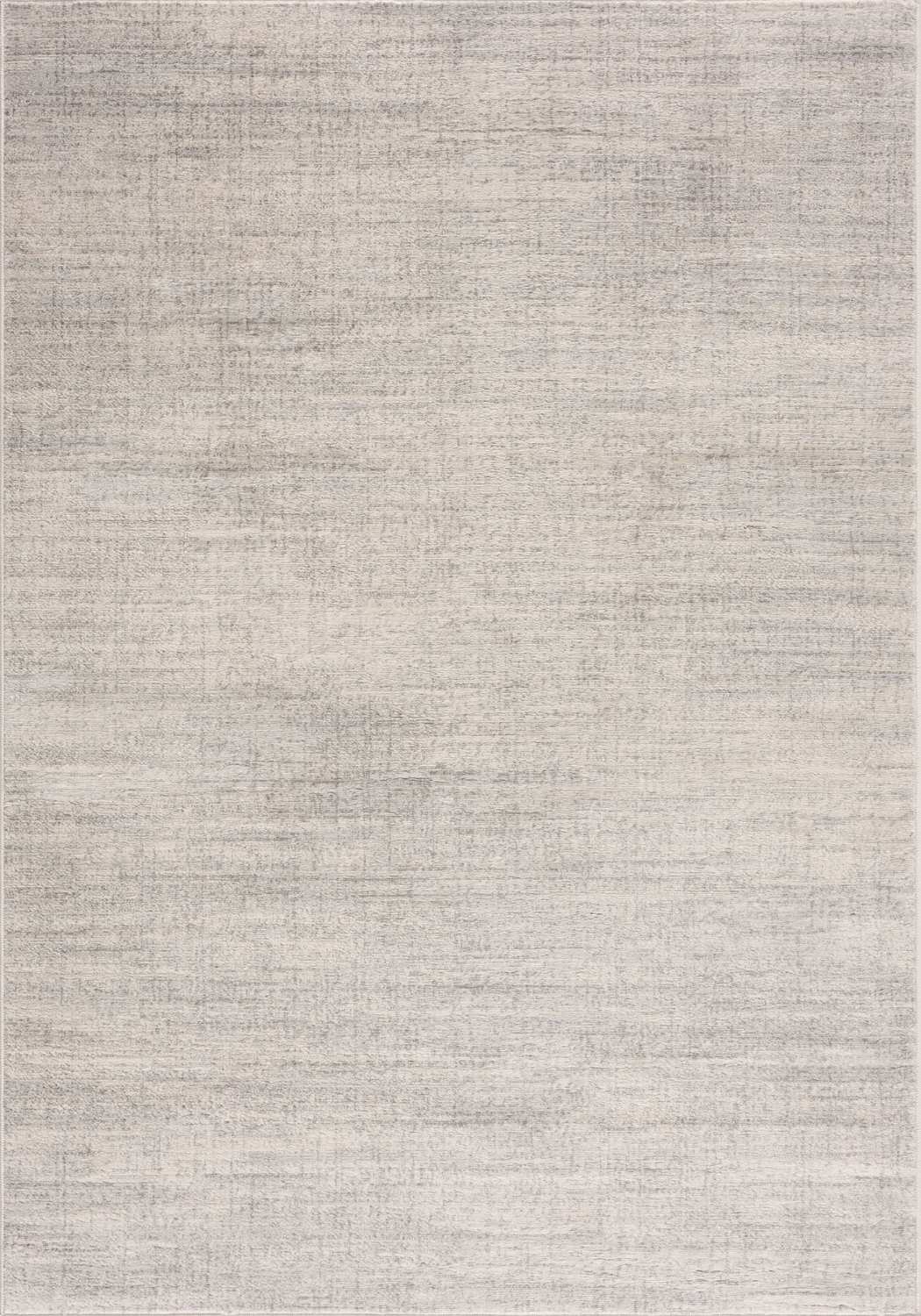
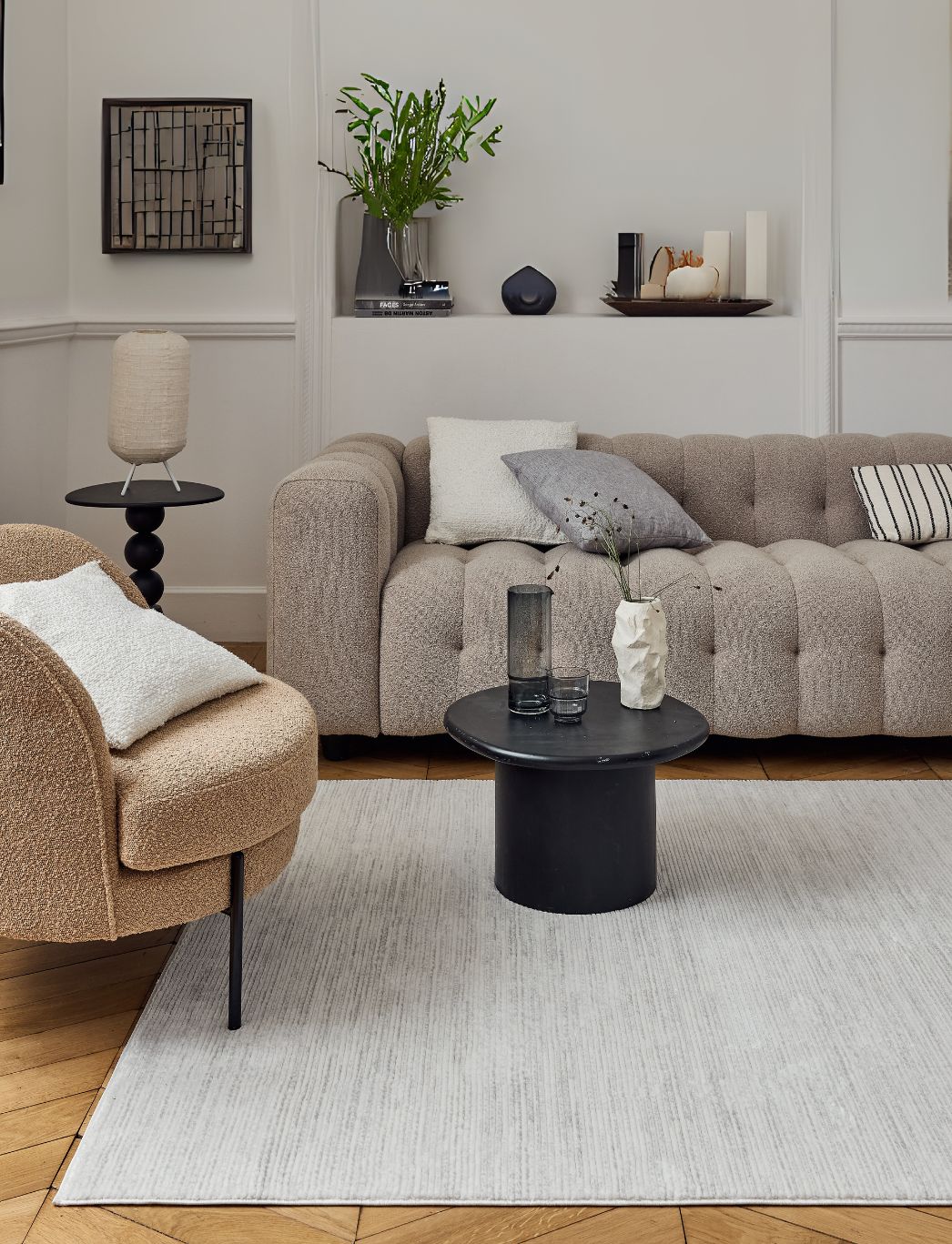

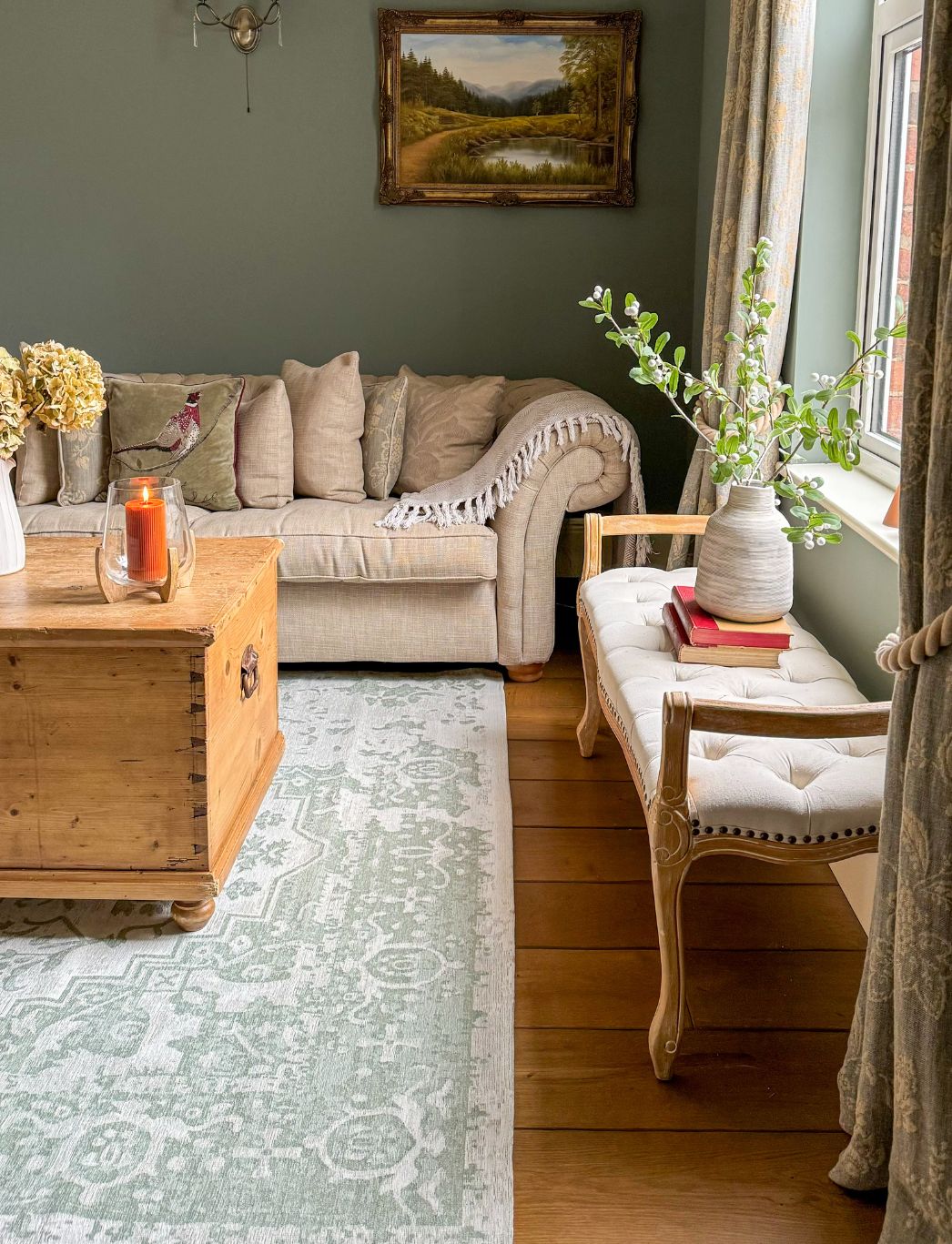
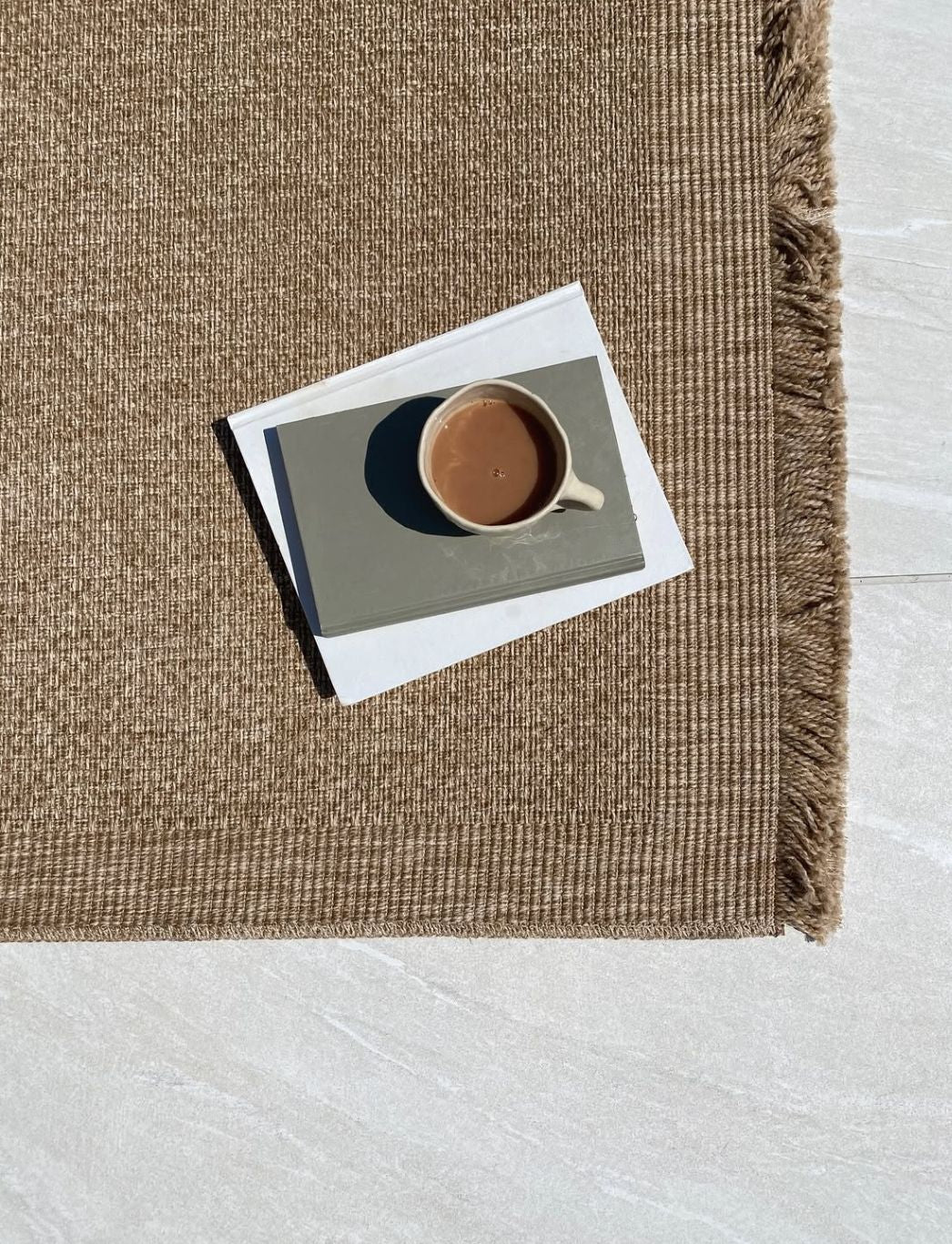
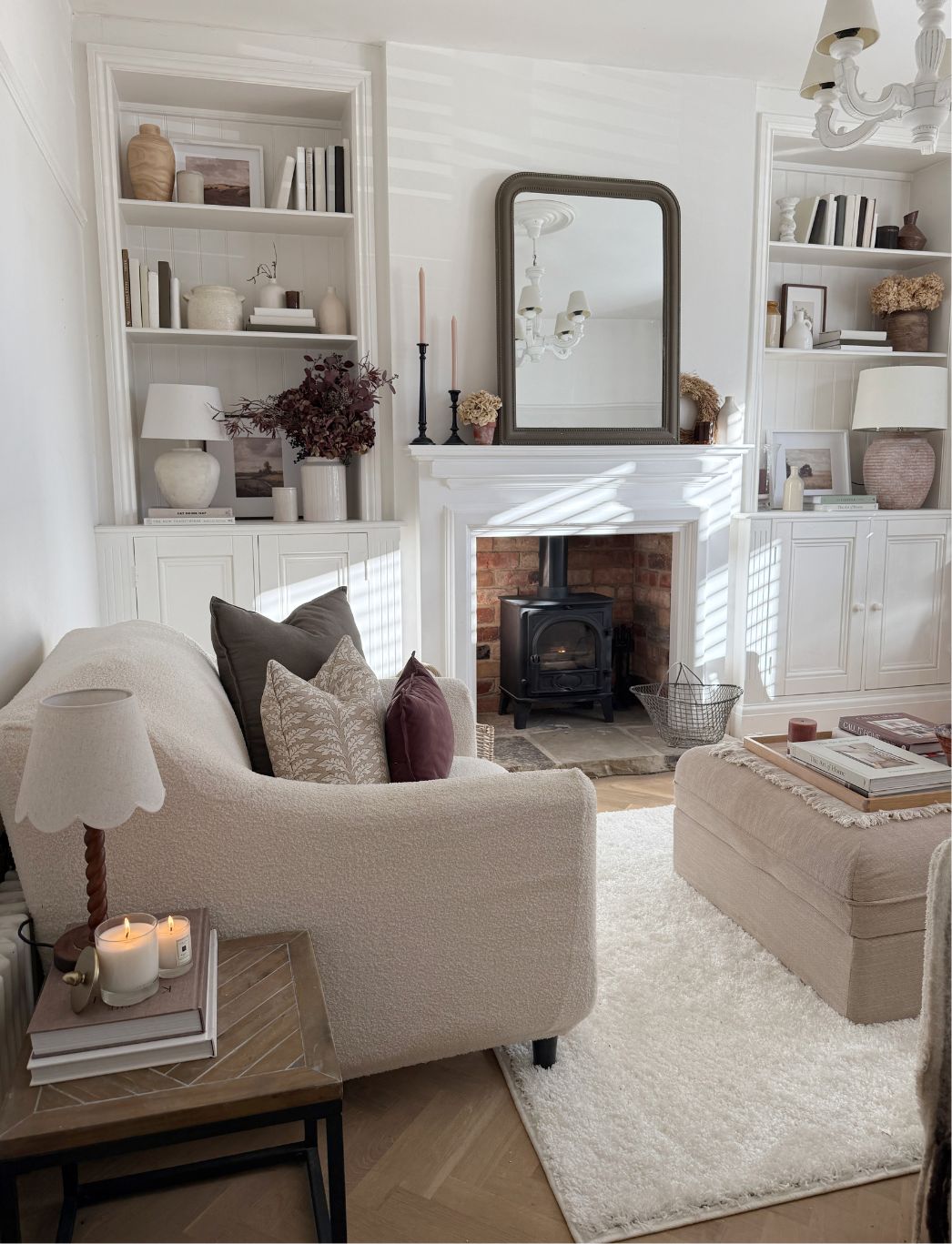
Leave a comment